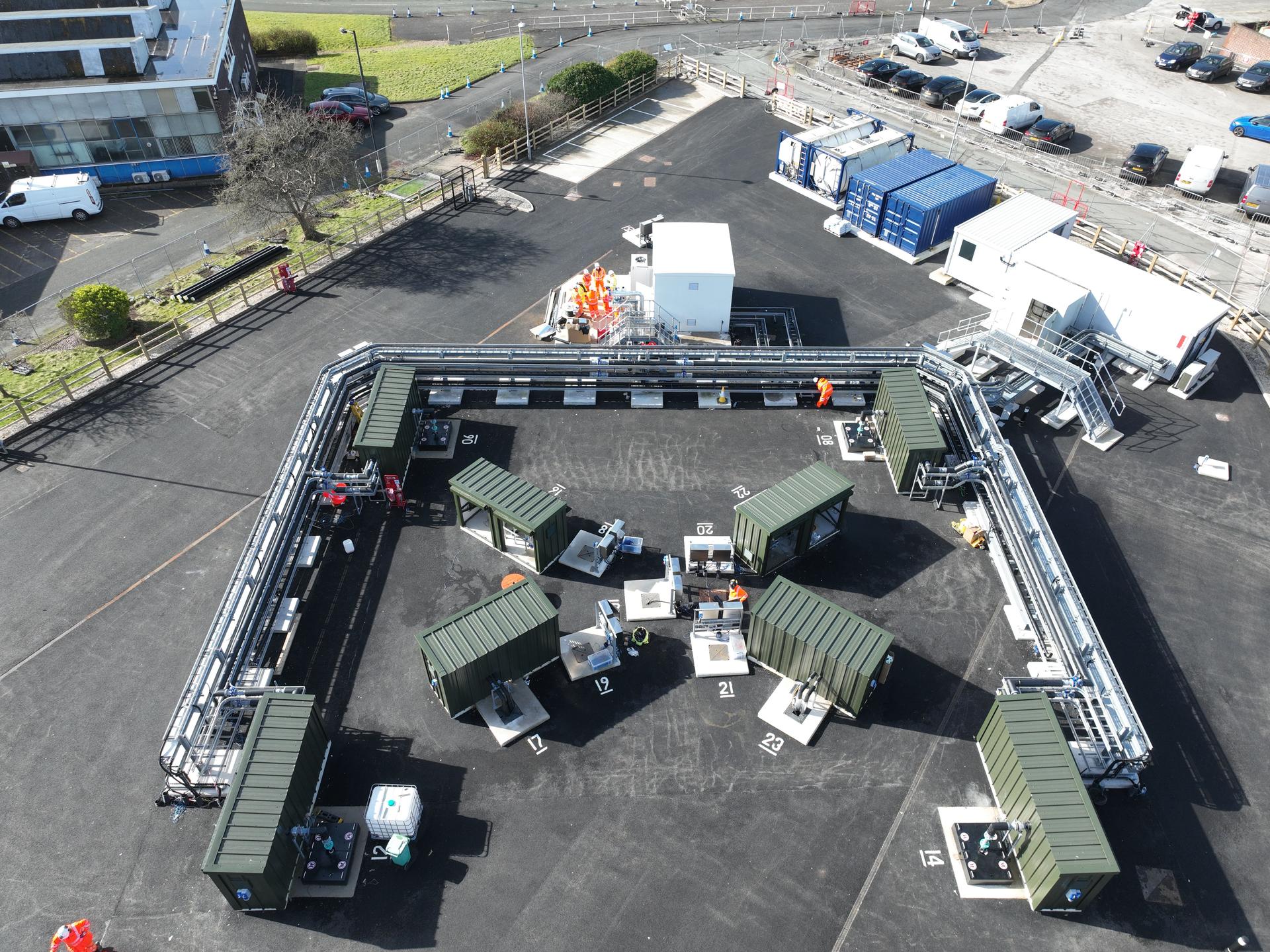
Spearheading the delivery of the UK Geoenergy Observatory in Cheshire
Learn about our role in the creation of this world-class geothermal research facility in northwest England, and how it will support the UK’s low-carbon future.
Despite its immense potential, geothermal energy remains a largely untapped renewable resource.
For this reason, the British Geological Survey (BGS) has developed – on behalf of the Natural Environment Research Council (NERC) and UK Research and Innovation (UKRI) – the £31 million UK Geoenergy Observatories (UKGEOS) facilities, of which the Cheshire Observatory is a key part.
Appointed by the BGS as Principal Contractor for the £10 million UKGEOS Cheshire Observatory, our team was instrumental in bringing this project to life – responsible for all elements of the build including a complex programme of drilling, civils works and a detailed mechanical and electrical installation for all the components required to deliver the facility.
What is the Cheshire Geoenergy Observatory – and why is it significant?
Situated at Cheshire’s Thornton Science Park, the Cheshire Geoenergy Observatory is a world-class science and research facility that will serve as a hub for scientists and innovators engaged in aquifer geothermal energy and subsurface energy storage.
Scientists will use the observatory to investigate how natural geological features influence heat flow – and how aquifer geothermal schemes can be tailored to the local geology to maximise thermal performance.
The observatory is equipped with advanced fibre optic and electrical instrumentation for high-resolution, near real-time imaging of heat flow, together with systems for heating or cooling the subsurface and controlling the direction and speed of groundwater flow.
Moreover, the facility will play a key role in the UK’s energy transition by facilitating geothermal research to decarbonise and decentralise the heating and cooling of our buildings, and provide heat storage to balance demand, thereby increasing the resilience of our energy supply.
What was AECOM’s role on the Cheshire Geoenergy Observatory?
As Principal Contractor, we were responsible for planning, managing, monitoring and coordinating the entire construction phase. This meant our team was on-site throughout the build to ensure the work was carried out efficiently and safely.
Drilling for the observatory was particularly complex, involving 21 boreholes, each 100 metres deep, spaced as close as 3 metres apart in sandstone geology. These boreholes, equipped with state-of-the-art sensors, are crucial for advancing our understanding of shallow aquifer thermal energy storage.
Spatial challenges also impacted the construction of the facility’s structural, mechanical and electrical systems, requiring delicate phasing to ensure everything was built safely and without damaging delicate scientific equipment.
The site also contains a data centre which houses monitoring systems, servers and communications equipment essential for managing the large quantities of data collected.
Supporting the local workforce and creating positive community impact
As part of the build, we delivered multiple benefits for the community, from using local subcontractors where possible to delivering education and skills training.
Our efforts also included hosting workshops, facilitating student placements, supporting apprentices, arranging undergraduate visits from a local university, hosting STEM events, and engaging in collections and team-building sessions for local charities.
These endeavours fostered teamwork and helped us overcome technical challenges throughout the project.
A key enabler for the UK’s energy transition
Now complete, the Cheshire Observatory will facilitate the development of one of the most comprehensive datasets in the world on the geological environment.
Using the sub-surface data, researchers will be better able to develop new systems and technologies that can leverage the abundant – and largely untapped – energy resources beneath our feet.
Not only will the facility deepen our understanding of geothermal energy and its potential, but it will also foster innovation in low-carbon energy supply and storage – helping the UK meet its net zero goals faster.
Image credit: British Geological Survey (BGS)